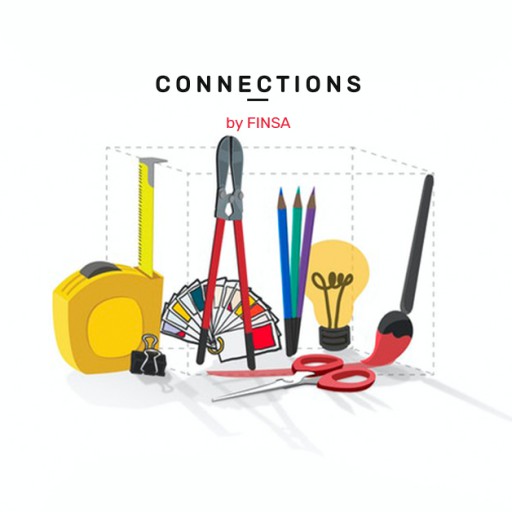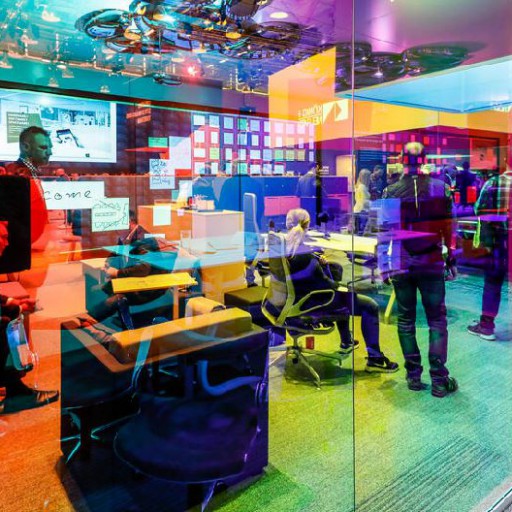Until the coronavirus crisis hit, most people spent more time outside their homes than inside them. Over the last few weeks, everything has changed and, as Rocío Pina (ENORME Studio) says, we have transformed our homes “into multiuse spaces: now they aren’t just where we sleep, but also the place that we eat with our family, and where we have a home gym or an improvised workspace set up”. With this new paradigm in mind, we spoke to interior design and architecture studios to find out their tips, predictions, and thoughts about the future.
Space is not created, it is transformed
Because we need our houses to be multifunctional, Cathy Figueiredo from WannaOne suggests placing a greater emphasis on organisation “because visual equilibrium enhances the interior of the home”. In addition, Rocío Pina (ENORME Studio) highlights looking for formulas that make things more flexible, even if some physical limitations exist:
“space is not created, it is transformed using functional elements that make the home more liveable,” she concludes. In Pina’s opinion, lockdown will make us realise that that space is going to become “an asset that needs to protected, something that is just as important as water or energy”.
Ver esta publicación en Instagram
Big and small changes
“Let’s not waste the chance to rethink a room, a corner, or the whole house,” says Dalia Pena from Peza Estudio. “Ask yourself if you truly feel good in your home and whether or not you need to change something. We can start with something simple, like moving an armchair, so that it catches the sunlight mid-morning, and work up to organising drawers that are full of things,” she explains. Eva Prego, from Stone Designs, also recommends making changes: “it helps to break up the monotony, even if it’s just moving furniture around with the idea of getting more light or space, or making it easier to move around the home,” she explains.
Ver esta publicación en Instagram
Make your home green
Cathy Figueiredo (WannaOne) points to real plants “for the way that they help us keep in contact with nature and the outside world”, while Eva Prego (Stone Designs) says that “it’s a good time to look at [plants] and see how they evolve in this very explosive spring that we are living though”. She adds that planting everything you possibly can could be an activity for the little ones in your home. Prego gave us some ideas, like putting an avocado seed in water, as well as apple, pear, lemon, and orange seeds.
Ver esta publicación en Instagram
Your personal touch
“Personal details, like a work of art, a souvenir from a trip, or a lit candle at nightfall, remind us that our house is our temple, the only place that we are protected and cocooned,” explains Cathy Figueiredo (WannaOne). Whatever it is that reconnects you to yourself, take it out of that drawer and put it on display in your home.
Hack the software and the hardware of your home
Starting with the software of your home (i.e. the interior elements), Izaskun Chinchilla recommends going for flexible furniture, like folding or expandable tables, instead of pieces of furniture that only have one use, such as a sideboard to display a dish set. When it comes to the hardware of the home (i.e. the architectural elements), she suggests that “if quarantine situations start to become more frequent, we might have to think about making changes to the home that break away from the traditional layout of a main bedroom, a second bedroom, subdivided rooms…”
Chinchilla points out that the homes that will best adapt to the lockdown situation are those “with the least hierarchy, where communal areas are centralised and have a more open-plan, versatile layout, with fewer separations between them, and where family members can be doing different activities at the same time.”
Ver esta publicación en Instagram
What will our homes be like after coronavirus?
“What this crisis is showing us is that the home has become a microworld, and that even though family models are much more fluid…we live in our homes the same way that we did a hundred years ago,” insists Rocío Pina (ENORME Studio). Chinchilla adds that we should place value on sustainable and healthy conditions “that not all homes abide by”, like maximising sunlight, cross-ventilation, and not having air conditioning. “The level of interior comfort of a home directly influences health and energy consumption,” she says.
Ver esta publicación en Instagram




